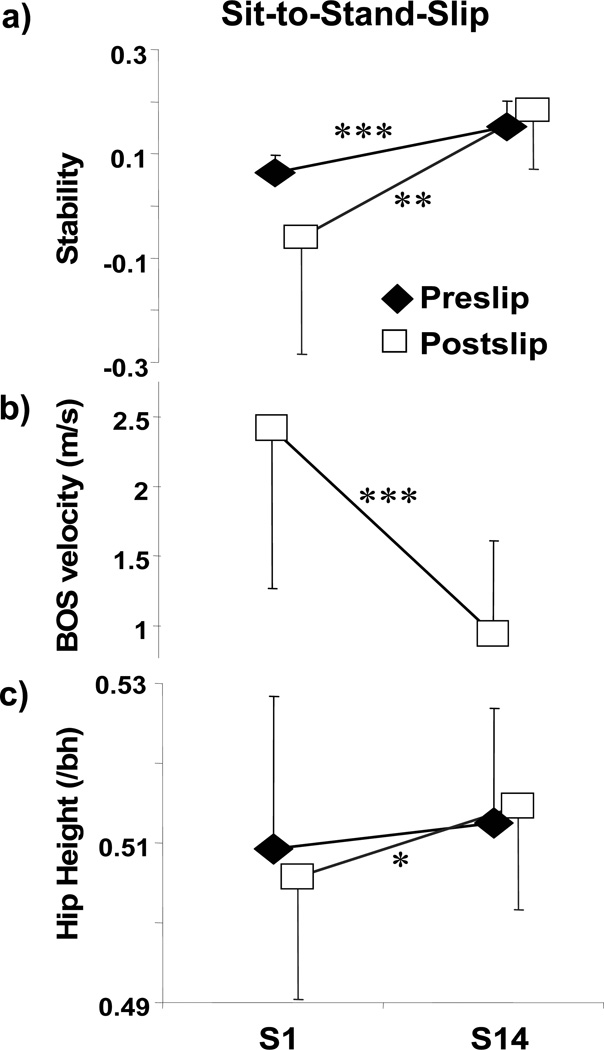Figure 4.
Comparison of group means (± SD) for a) pre- and postslip stability, b) peak base-of-support (BOS) velocity after slip onset, and c) pre- and postslip hip height between the first slip (S1) and the last slip (S14) during sit-to-stand. Preslip was measured at seat-off; postslip was measured at 300 ms after slip onset. Stability was defined as the shortest distance between the instantaneous COM state and the predicted boundary for backward balance loss under slip conditions; greater values indicate greater stability against backward balance loss. The peak BOS velocity was obtained from the greater of the two maximum velocities attained by the markers on the two sliding platforms. Hip height was quantified as vertical distance from the ground to midpoint of bilateral hips and normalized by subjects’ height (bh); a lower hip height indicates poorer limb support. * P<0.05; ** P<0.01; *** P<0.001.

